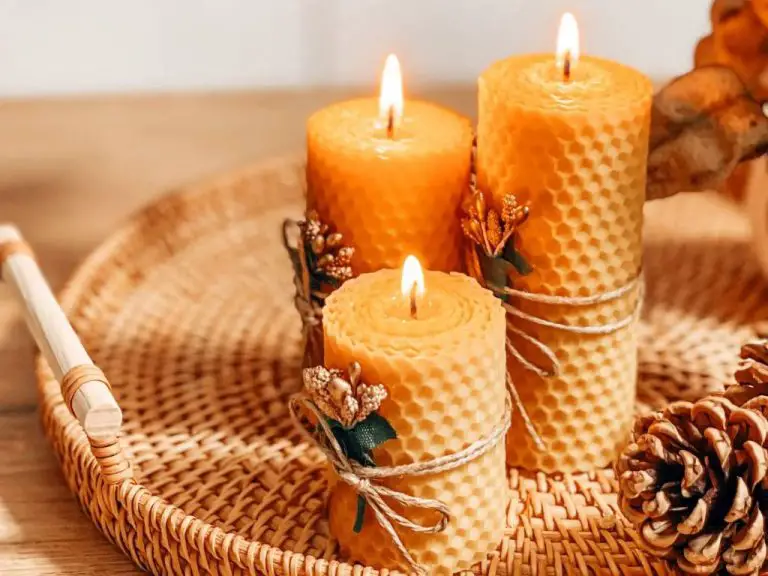Can You Make A Wick Out Of Wood?
Wicks are used in items like candles, oil lamps, and liquid fuel lamps to draw the liquid fuel up and expose it to oxygen in order to induce burning/combustion. Traditional wicks are made from tightly woven materials like cloth, paper, or fiber. Exploring alternative wick materials expands the options for do-it-yourselfer’s, allowing for greater self reliance and sustainability. Wood, for example, can be whittled into wicks that are cheap, eco-friendly, and easy to produce from natural materials on hand like fallen branch trimmings.
Traditional Wick Materials
For many years, cotton has been the dominant material used to make candle wicks. Cotton is widely available, absorbent, and inexpensive, making it well-suited for wick-making on a large scale.
Cotton wicks have decent capillary properties, so they channel melted wax well enough for use in most candle types. However, cotton does have some downsides. It can carbonize easily and generate black soot, especially in larger diameter wicks.
Paper and fiber wicks have surfaced as an alternative to cotton. Paper used for wicks often comes from thin sheets of tissue paper, rice paper, or other thin, porous paper. Special paper blends have also been developed to create longer-lasting, cleaner burning wicks.
Fiber wicks may be made from materials like wood pulp or plant cellulose. The advantage is that specially engineered fibers can offer superior capillary action and generate little to no soot.
The downside is that paper and fiber wicks tend to be more expensive to produce. So while they perform better technically, the higher cost makes them impractical for many mainstream candle manufacturers looking to minimize expenses.
Why Consider Wooden Wicks?
Wooden wicks offer some unique benefits over traditional wick materials like cotton or paper:
Sustainability – Many types of wood used for wooden wicks, such as maple or poplar, are renewable resources that can be responsibly sourced. Using wooden wicks reduces the need for petroleum-based paraffin wax.
Cost – In some cases, wooden wicks may be more affordable than high-quality woven cotton wicks, especially when sourcing local wood.
Availability – Wood scraps and small branches needed for wicks are widely available at low or no cost. This makes wooden wicks very accessible.
Unique Properties – As wooden wicks burn, they make a pleasant, crackling sound and give off a natural wood scent. The wood grain also creates beautiful candlelight patterns.
Choosing the Right Wood
When selecting wood for homemade wicks, you’ll want to choose a hardwood rather than a softwood. Hardwoods are denser, burn slower and more evenly, and tend to be less resinous than softwoods. Some of the best types of wood to use for wicks include:
- Basswood – Very dense but lightweight hardwood that burns slowly and evenly
- Birch – Another dense hardwood that is easy to cut and shape into wicks
- Maple – Extremely hard with a closed grain that resists moisture, creating an even-burning wick
- Oak – Not quite as dense as other hardwoods but still durable and slow burning
Softwoods like pine tend to burn faster, unevenly, and more intensely due to their higher resin content. This can lead to troublesome sooting and dripping with wicks made from softwoods. Ultimately it’s best to experiment with different hardwood species that are most readily available in your area.
Preparing the Wood
Proper preparation of the wood is an essential step when making a wooden wick. The wood needs to be sanded, cut to size, and extremely dry before attempting to make a wick.
Sanding the wood creates a smooth surface which allows for better capillary action to draw fuel up the wick. Start with a coarse grit sandpaper to remove any rough edges, then progress to finer grits to make the wood silky smooth.
Cutting the wood to consistent widths between 1/8 to 1/4 inches helps ensure even burning. A helpful tip is to slide square wooden dowels onto thin bamboo skewers to serve as a template when cutting the wood strips.
Making sure the wood has a moisture content below 10% is vital. Wet wood will crack and split under a flame. Allow wood strips to air dry thoroughly indoors for several weeks before using for wicks. Test the moisture with a meter prior to wick creation.
Creating the Wick
Once the wood has been properly prepared, it’s time to start shaping it into a finished wick. There are a few techniques you can use to craft your wooden wick:
Rolling
Take your wood slivers and gently roll them between your fingers or use a rolling pin to create a round, cylindrical wick. Apply even pressure as you roll to achieve consistent thickness. Target a 1/8″ to 1/4″ diameter for most applications.
Braiding
For thicker, sturdier wicks that resist bending, consider braiding multiple strands of wood together. You may need to notch or taper the ends first to aid the braiding process. Aim for 3-5 strands with diameters of 1/16″ to 1/8″ each.
Twisting
For slender wicks, simply take 2-3 wood slivers and twist them gently together at an even pressure. You can create a tight twist for rigidity or leave some space between the strands.
Wick Maintenance
As your wooden wick candle burns, it’s important to trim the wick periodically to maintain a steady flame. An untrimmed wick can produce excess smoke or an uneven flame. Follow these steps for wick maintenance:
1. Trim the wick to 1⁄4 inch before lighting. Use wick trimmers or small scissors to trim the wooden wick to about 1⁄4 inch before the initial lighting. This prevents excess smoke when you first light the candle.
2. Trim off carbon buildup. Wooden wicks can develop carbon “mushrooms” on the tip as the candle burns. Gently pinch these off periodically to keep the wick end clean for an even burn.
3. Trim wick to 1⁄2 inch as needed. When the wooden wick becomes harder to keep lit or produces excess smoke, use wick trimmers to trim it back down to 1⁄2 inch. This will help center and straighten the wick.
4. Repeat trimming. Continue monitoring the wick and trimming as necessary to maintain a height around 1⁄2 inch as the candle burns down. This helps ensure an even burn and cleaner flame.
Troubleshooting
Wooden wicks can develop issues like sooting, mushrooming, and drowning that need to be troubleshooted. Here are some common wooden wick problems and tips to fix them:
Sooting – This is when black carbon deposits appear on the wax around the wooden wick and is caused by incomplete combustion. To prevent sooting, carefully trim the wick to the correct height and make sure not to overload it with wax. You may also need to adjust your burning vessel or use wax additives.
Mushrooming – This is when ash builds up on the burning tip of the wick causing it to swell and hamper the capillary effect. To fix this, trim the excess ash off the wick carefully and allow it to dry completely before relighting. Maintaining the proper wick height will help prevent mushrooming.
Drowning – This happens when melted wax overwhelms the wick and extinguishes the flame. To avoid wick drowning, keep the wax pool size regulated and ensure the wick is not overpowered by too much melted wax. Careful wick maintenance and using the right wax-to-wick ratio will prevent drowning.
Properly troubleshooting issues like sooting, mushrooming and drowning will help keep your wooden wicks burning efficiently and cleanly for maximal enjoyment. Feel free to trim wicks as required and adjust factors like wax pool size or wax formulation to suit the wick as you go along.
Safety Considerations
Proper candle safety involves diligent monitoring while burning, using the right materials, and correctly pairing the wick to the candle diameter. Wicks that are too large for the wax pool put you at risk of soot buildup, smoking, wild flames that tunnel into your wax, glass container stress cracks, or even house fires in extreme cases.
With a wooden wick, it’s especially important to trim to the proper resting height for your candle’s glass width and wax type, according to manufacturer guides. Watch the first few burns closely to ensure an ideal melt pool depth free of debris, no more than 1/4 inch deep before extinguishing. Adhere to candle burning best practices, keeping wood wicks centered and wax pools free of obstacles like match tips that could spark dangerously.
Never leave a burning candle unattended. Place on candle plates on a stable, level, heat safe surface away from anything flammable. Trim wicks as needed to 1/4 inch height to encourage self-extinguishment as the melt pool reaches the edges, preventing glass cracks. Let wax fully harden and cool between burns, allowing the wood wick and all wick debris to settle to the bottom. Proper wooden wick maintenance helps prevent unsafe issues.
Conclusion
Wood by itself is generally not the best option for wicks due to some key drawbacks. While wood is a readily available material, it often lacks the capillary action that cotton, hemp, or paper provide to sufficiently draw up fuel for a candle or lamp. When wood burns, it also tends to expand and char as it burns, increasing the likelihood that the wick will clog or choke the flame. Here are some key findings:
- Natural fibers like cotton and hemp can wick better than untreated wood.
- Some treated and compressed woods can make functional though temperamental wicks.
- Look for little to no warping or checking in wood grain for best results.
- Allow wood wicks to absorb wax or fuel fully before lighting to aid capillary action.
While wood alone has some limitations as a wick material, adding a strip or strand of cotton through an untreated basswood or poplar wick can improve its functionality. With patience and care in preparation, wood can be used to create unique and decorative wicks, though may require more maintenance to keep flames even and prevent choking. For most reliable results, natural fiber wicks are still the top recommendation.





